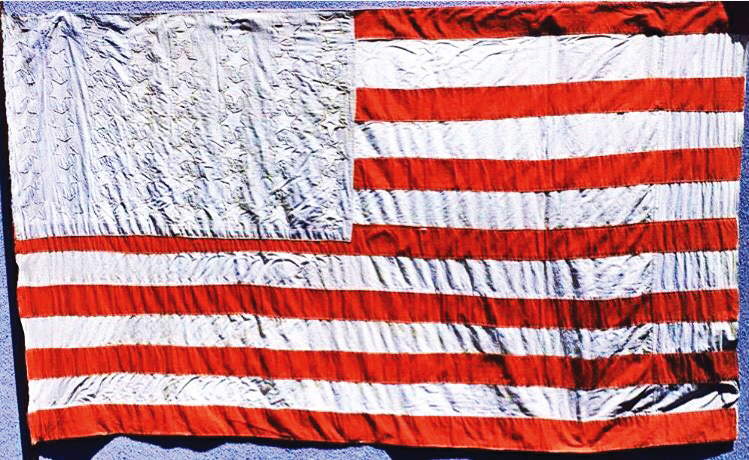What our flag stands for

By Rabbi Judy Chessin, Temple Beth Or
On June 14, 1777, our Stars and Stripes became the first national flag of the United States, when the Continental Congress passed the first Flag Act to establish an official standard for the new nation and show solidarity with the Continental Army.
In 1960, our current United States flag was adopted with 50 stars to represent the 50 states and 13 stripes to honor the original colonies. The red color symbolizes valor, the white symbolizes purity, and the blue represents justice.
The flag was designed to be a unifying symbol, but nearly two and a half centuries later, some people view it as provocative.
Some argue that “right-wing extremists” have co-opted the flag, while others display the Stars and Stripes upside down in protest of governmental corruption and the perceived erosion of civil rights.
In contrast, a unique American flag that Jews might doubly celebrate this season was created at the Mauthausen concentration camp.
If you look closely at this Star-Spangled Banner, you will count 56 stars! How can that be?
This flag was sewn in the Mauthausen concentration camp in Austria. During the spring of 1945, rumors began to spread throughout the camp that American forces might soon liberate Mauthausen!
So the Jewish prisoners came up with a plan. They would greet their liberators with an American flag to thank the soldiers for giving them back their lives.
The camp members gathered every scrap of material wherever they could find them: sheets from the laundry, red fabric from old Nazi banners, the blue-gray cloth from their ragged prison jackets.
For countless hours, they worked secretly in the nighttime, sewing stitch after stitch, with hope in their hearts and faith for the future.
But these were Jews from Poland, Lithuania, and Austria. How were they supposed to know the number of stars and stripes on an American flag?

While they got the 13 stripes correct, they mistakenly attached 56 stars. Perhaps they believed there were 56 states?
Or, as another theory has it, since no one knew for sure, they put on as many stars as would fit.
In any case, Simon Wiesenthal, a prisoner in Mauthausen then, would later comment, “The stars were for hope, justice, tolerance, friendship, brotherly love, and understanding. In the stripes, we saw the road to freedom!”
When the 11th Armored Division, the Thunderbolt, arrived to liberate the camp, and its leader, Col. Richard Seibel, jumped down from his tank, the survivors presented him with their gift — the American flag.
Col. Seibel took the flag, held it up, and kissed it. With tears in his eyes, he thanked the survivors, recognizing the extraordinary courage it took to make this flag, no matter how many stars. Seibel tore down the Nazi flag and insignia waving over Mauthausen camp and, in its stead, flew this proud symbol of freedom for as long as American forces were stationed there.
Fittingly, after the death of Col. Seibel, the flag went to the Simon Wiesenthal Center, since Wiesenthal himself was one of the very prisoners liberated that day, May 5, 1945.
As the famous Nazi hunter later said, “America for us was a symbol of all we had lost. I barely weighed 90 pounds that day, and like so many others, I was too weak to walk, but seeing that American flag rekindled something in each of us. Every star on the flag stood for something precious we had lost; one for hope, one for freedom, one for justice.”
In a time of divisive partisan rhetoric, we would do well to remember what our flag stands for, both at home and abroad.
Even if we disagree with our politicians or their platforms, our nation’s success is built on our shared values and aspirations.
As Americans, let’s look at our flag and honor the sacrifices made for justice, freedom, and hope. Let’s renew our pride in our country and strive to be a nation that truly embodies the ideals represented by our flag.
May the sight of Old Glory reignite the spirit of unity within us, and may each star symbolize hope, freedom, and justice for all.
On Flag Day, 1917, President Woodrow Wilson stated, “This flag, which we honor and under which we serve, is the emblem of our unity, our power, our thought and purpose as a nation. It has no other character than that which we give it from generation to generation. The choices are ours.”
To read the complete July 2024 Dayton Jewish Observer, click here.





